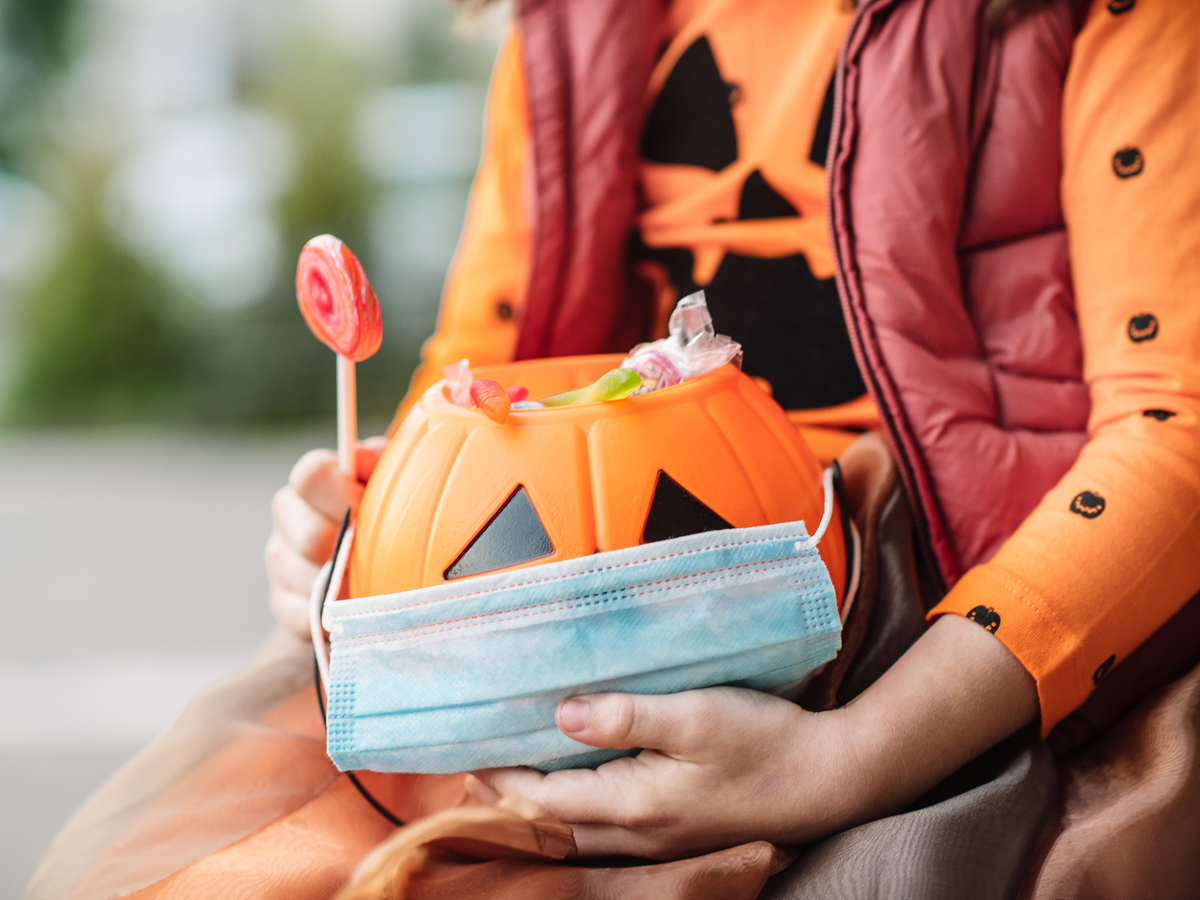
[ad_1]

The Centers for Disease Control and Prevention’s guidelines for a safe Halloween amid the COVID-19 pandemic include new methods of doing classic spooky activities.
ArtMarie/Getty Images
hide caption
toggle caption
ArtMarie/Getty Images

The Centers for Disease Control and Prevention’s guidelines for a safe Halloween amid the COVID-19 pandemic include new methods of doing classic spooky activities.
ArtMarie/Getty Images
In a year that’s been plenty scary, this much is clear: Pandemic Halloween will be different than regular Halloween. Many traditional ways of celebrating are now considerably more frightful than usual, because now they bring the risk of spreading the coronavirus.
Accordingly, the Centers for Disease Control and Prevention has issued new guidelines on how to celebrate Halloween safely. No big surprise: Classic door-to-door trick-or-treating and crowded, boozy costume parties are not recommended.
The CDC’s guidelines group Halloween activities into lower risk, moderate risk and higher risk buckets.
The higher-risk category includes both door-to-door trick-or-treating and events where kids get treats from the trunks of cars in a big parking lot.
Also no-nos: indoor haunted houses where people will be crowded and screaming, which could send infectious particles flying. Going on hayrides with people who aren’t in your household or fall festivals in rural areas also carry a risk of spreading the virus that causes COVID-19. And using alcohol and drugs “can cloud judgement and increase risky behaviors,” the CDC warns — though that’s equally true in any season.
How to get your thrills instead?
The agency says this way of trick-or-treating poses a moderate risk (compared with the higher risk of the traditional style): Kids could pick up individually wrapped gift bags at the end of a driveway or yard, while still preserving social distance.
You could also organize a small outdoor costume parade where everyone is six feet apart. An outdoor costume party would also be considered moderate risk, if people wear masks and stay six feet away from each other.
Haunted houses are out, and haunted forests are in. The CDC says an open-air scare-fest is moderately risky, so long as the route is one-way, people wear masks appropriately and stay six feet apart. But there’s a caveat: “If screaming will likely occur, greater distancing is advised.”
What about apple picking and pumpkin patches? Risks can be reduced if people use hand sanitizer before touching pumpkins or apples, wear masks and maintain social distance.
Also on the moderate risk list: an outdoor scary movie night with local friends who are socially distanced. Again: The more screaming there is, the more space is needed for safe social distancing.
If you want to be really safe? Then you need to plan for either virtual activities or ones that you do largely with your own household.
The CDC’s lower-risk activities include carving pumpkins with your household, or outdoors with friends while socially distanced. It also suggests a Halloween scavenger hunt: looking for witches, spiderwebs and black cats outside houses while walking around — or a scavenger hunt for treats in your own home.
And what about masks? A costume mask is no substitute for a cloth mask, according to the agency, but don’t double up with one over the other because that can make it hard to breathe. Instead, consider a Halloween-themed cloth mask, the CDC suggests.
A costume mask can protect against spreading the coronavirus if it’s like a regular cloth mask: two or more layers of breathable fabric covering the nose and mouth, without gaps around the face.
And remember this, friendly neighbors: If you think you might have COVID-19 or have been exposed to someone who does, don’t attend in-person Halloween activities — and certainly don’t hand out candy to trick-or-treaters.
[ad_2]
Source link